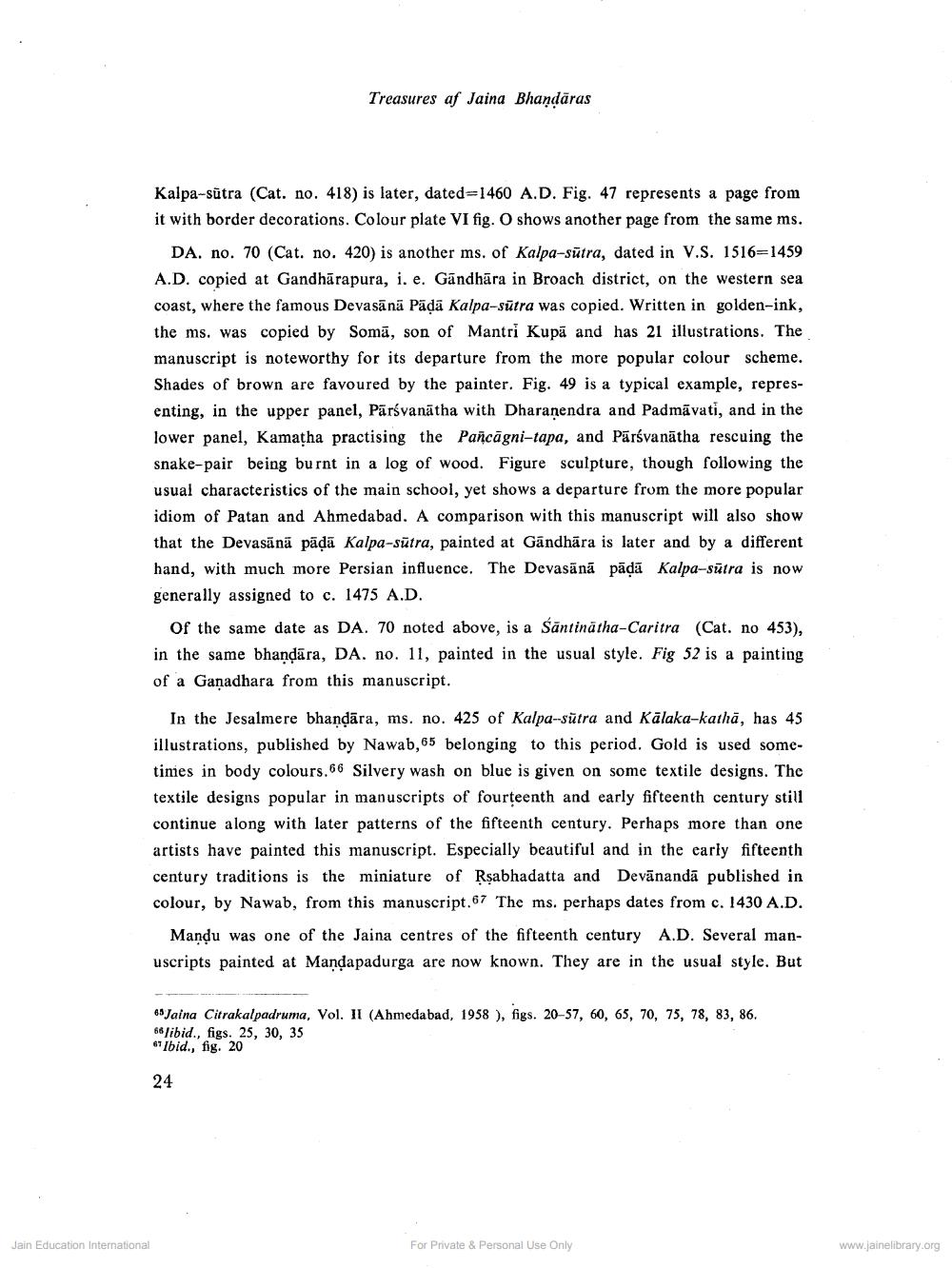________________
Jain Education International
Treasures af Jaina Bhandaras
Kalpa-sutra (Cat. no. 418) is later, dated=1460 A.D. Fig. 47 represents a page from it with border decorations. Colour plate VI fig. O shows another page from the same ms.
DA. no. 70 (Cat. no. 420) is another ms. of Kalpa-sutra, dated in V.S. 1516=1459 A.D. copied at Gandharapura, i. e. Gandhara in Broach district, on the western sea coast, where the famous Devasānā Pāḍā Kalpa-sūtra was copied. Written in golden-ink, the ms. was copied by Soma, son of Mantri Kupa and has 21 illustrations. The manuscript is noteworthy for its departure from the more popular colour scheme. Shades of brown are favoured by the painter. Fig. 49 is a typical example, representing, in the upper panel, Pārśvanatha with Dharanendra and Padmavati, and in the lower panel, Kamatha practising the Pañcagni-tapa, and Parsvanatha rescuing the snake-pair being burnt in a log of wood. Figure sculpture, though following the usual characteristics of the main school, yet shows a departure from the more popular idiom of Patan and Ahmedabad. A comparison with this manuscript will also show that the Devasānā pāḍā Kalpa-sūtra, painted at Gāndhāra is later and by a different hand, with much more Persian influence. The Devasānā pāḍā Kalpa-sutra is now generally assigned to c. 1475 A.D.
Of the same date as DA. 70 noted above, is a Santinātha-Caritra (Cat. no 453), in the same bhaṇḍāra, DA. no. 11, painted in the usual style. Fig 52 is a painting of a Gaṇadhara from this manuscript.
In the Jesalmere bhaṇḍāra, ms. no. 425 of Kalpa-sutra and Kālaka-kathā, has 45 illustrations, published by Nawab,65 belonging to this period. Gold is used sometimes in body colours.66 Silvery wash on blue is given on some textile designs. The textile designs popular in manuscripts of fourteenth and early fifteenth century still continue along with later patterns of the fifteenth century. Perhaps more than one artists have painted this manuscript. Especially beautiful and in the early fifteenth century traditions is the miniature of Rṣabhadatta and Devānanda published in colour, by Nawab, from this manuscript.67 The ms. perhaps dates from c. 1430 A.D.
Mandu was one of the Jaina centres of the fifteenth century A.D. Several manuscripts painted at Mandapadurga are now known. They are in the usual style. But
65 Jaina Citrakalpadruma, Vol. II (Ahmedabad, 1958), figs. 20-57, 60, 65, 70, 75, 78, 83, 86. 66 libid., figs. 25, 30, 35
67 Ibid., fig. 20
24
For Private & Personal Use Only
www.jainelibrary.org




